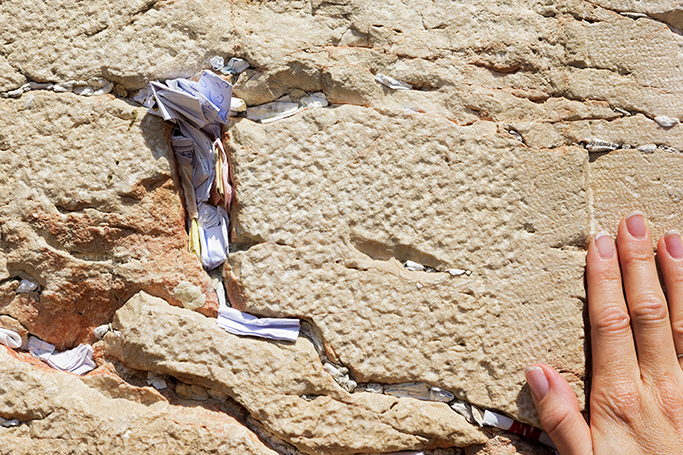Just what happened on the 9th of Av? Why is it the saddest day on the Jewish calendar? And what does the Western Wall have to do with it?
The place: Jerusalem. The year: 70 CE. The Jews were four years into a military uprising against the Roman Empire. Judean rebels had managed to establish their own provisional government and hold off the mighty Roman army, who’d been trying to batter their way through Jerusalem’s triple walls that so far had been holding strong. But three days before Passover — a time when Jerusalem’s population swelled with pilgrims — future Roman Emperor Titus decided to win at any cost. He ordered his army to siege the city, starving Jerusalem of food and supplies. When months later the army at last overtook Jerusalem’s defenses, Roman soldiers flooded into the streets to find a horror of mass death from famine and disease — as well as weakened Judean rebels charging at them in hand-to-hand combat.
The fighting intensified as the Romans pressed toward the glorious Second Temple, which was filled with civilians taking shelter. It had been the site of all Jewish worship since the destruction of the original Temple by Babylonians in 586 BCE, on the 9th day of the month of Av, and Judean fighters were determined to defend it to the death. But after a terrible battle, the Romans stormed, looted and burned the Temple, massacring everyone inside. They went on to sack all of Jerusalem, slaughtering or enslaving any survivors. Nineteen centuries of Jewish exile began.
The date? Once again, the 9th of Av.
Judaism would forever change after that date. As a wandering people without a homeland, our liturgy grieved our exile from Jerusalem and longed for a return to the holiness of Zion; a section of the Second Temple’s Western Wall, which remained standing, became a physical symbol of that yearning. Judaism changed in another fundamental way. The Second Temple had been the center of the Jewish universe, with a high priest performing all rituals on our behalf. Without the Temple, Judaism grew to become a decentralized, community-oriented religion, with prayer taking place in synagogues, rabbis leading congregations and everyone partaking in worship: the Rabbinical Judaism we’re familiar with today.
On Tisha B’Av, the Temple was destroyed, and Judaism itself could have been destroyed along with it. Instead, we adapted and thrived. It makes Tisha B’Av not just a day of fasting and mourning, but also a powerful reminder of the resilience of the Jewish people.



